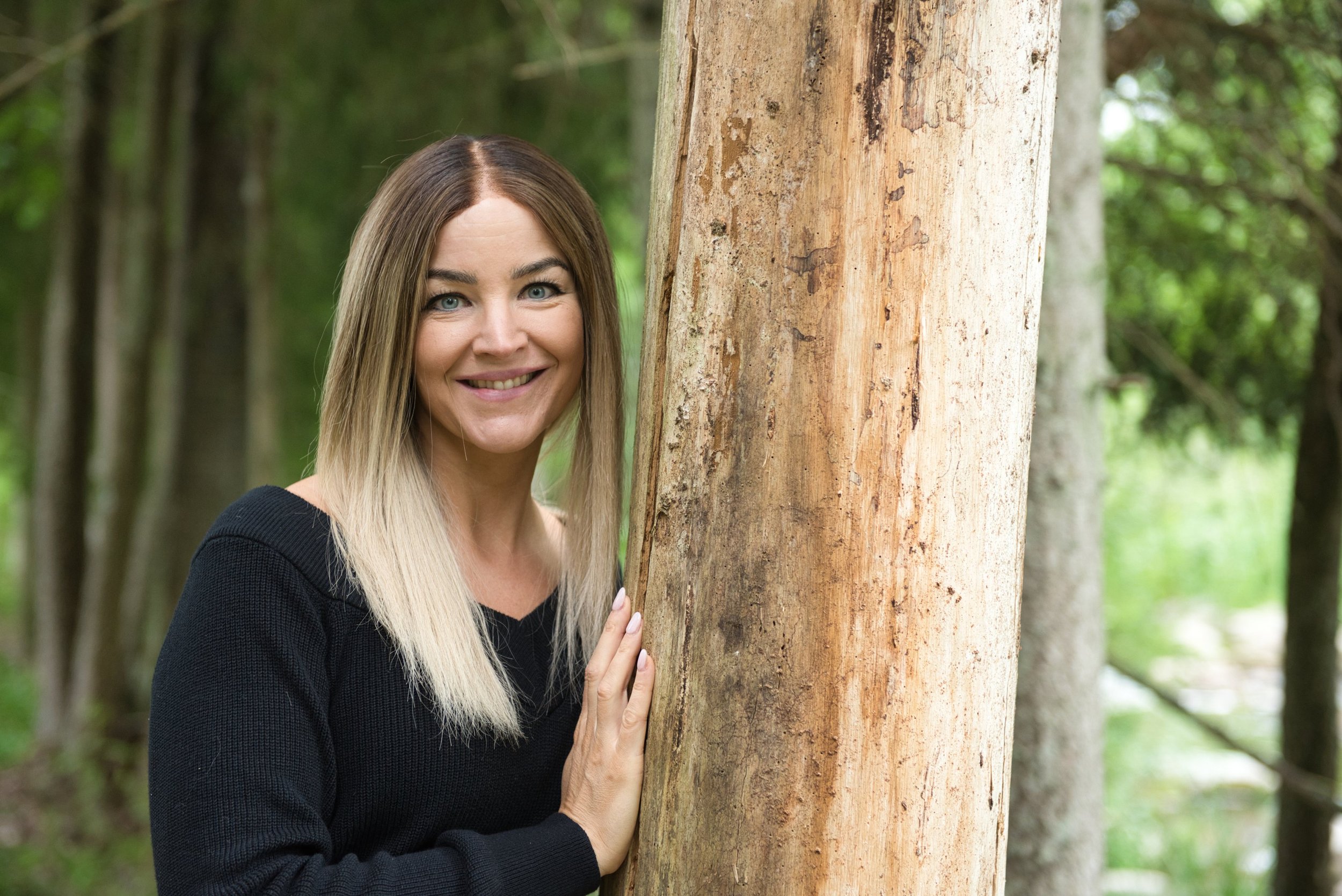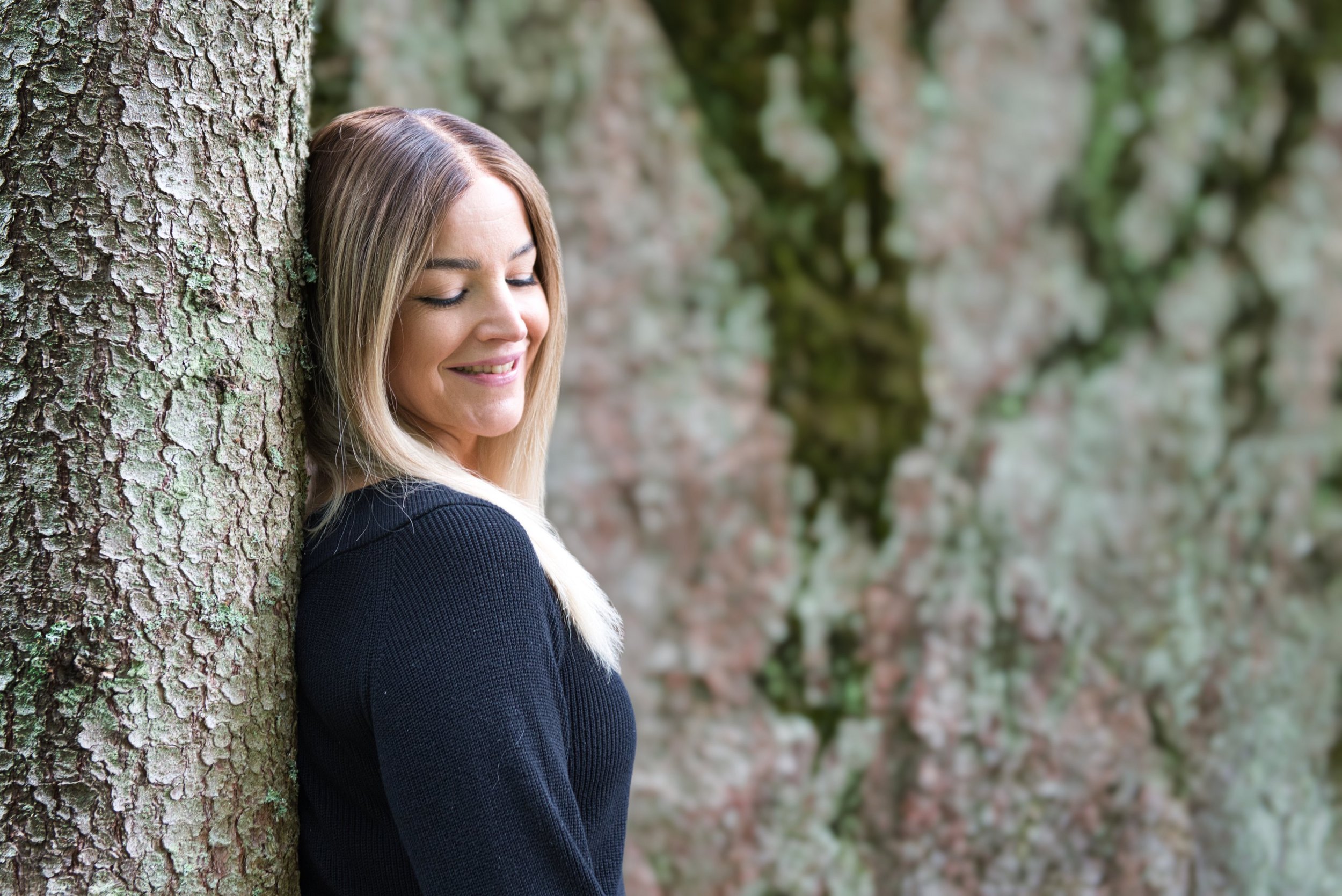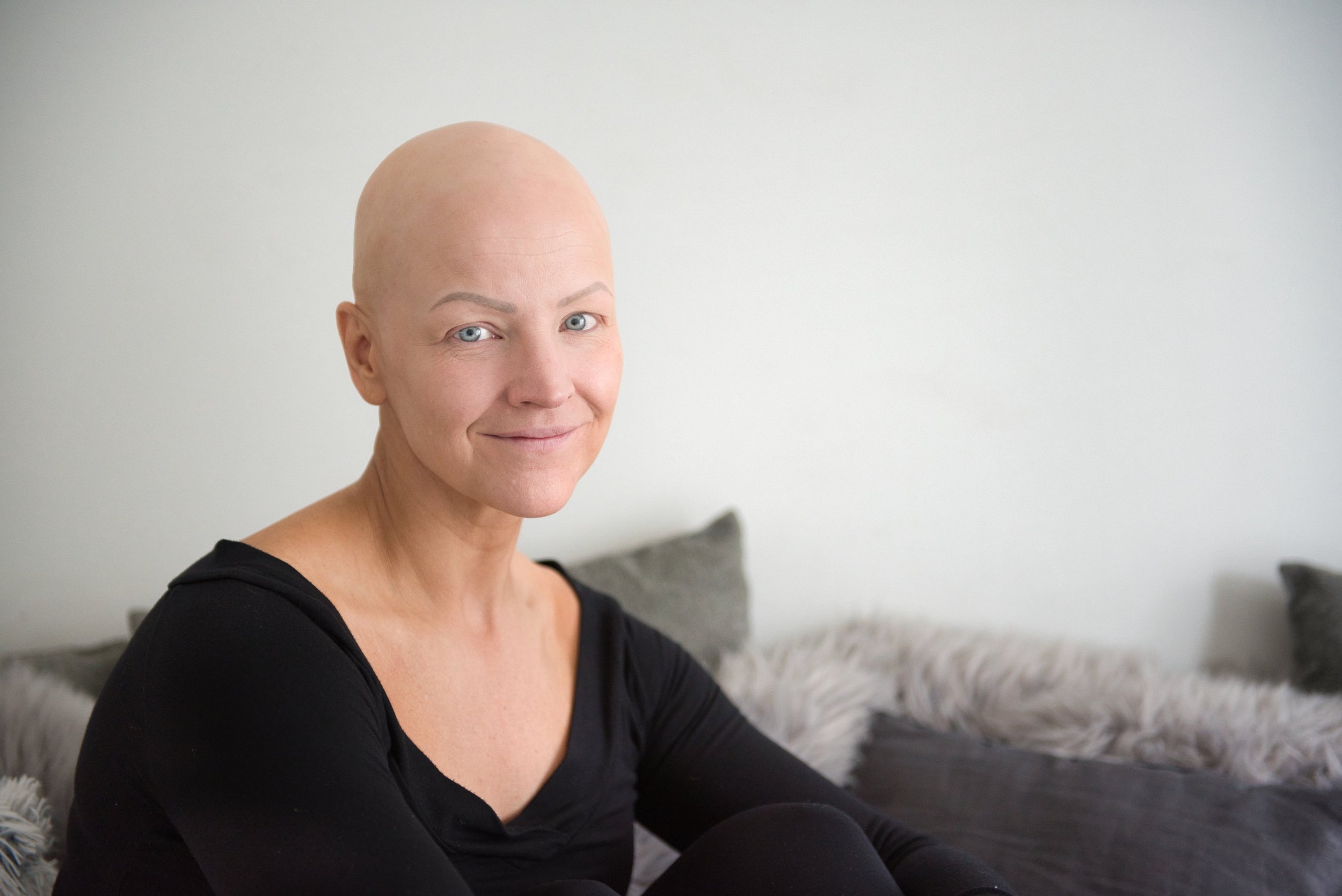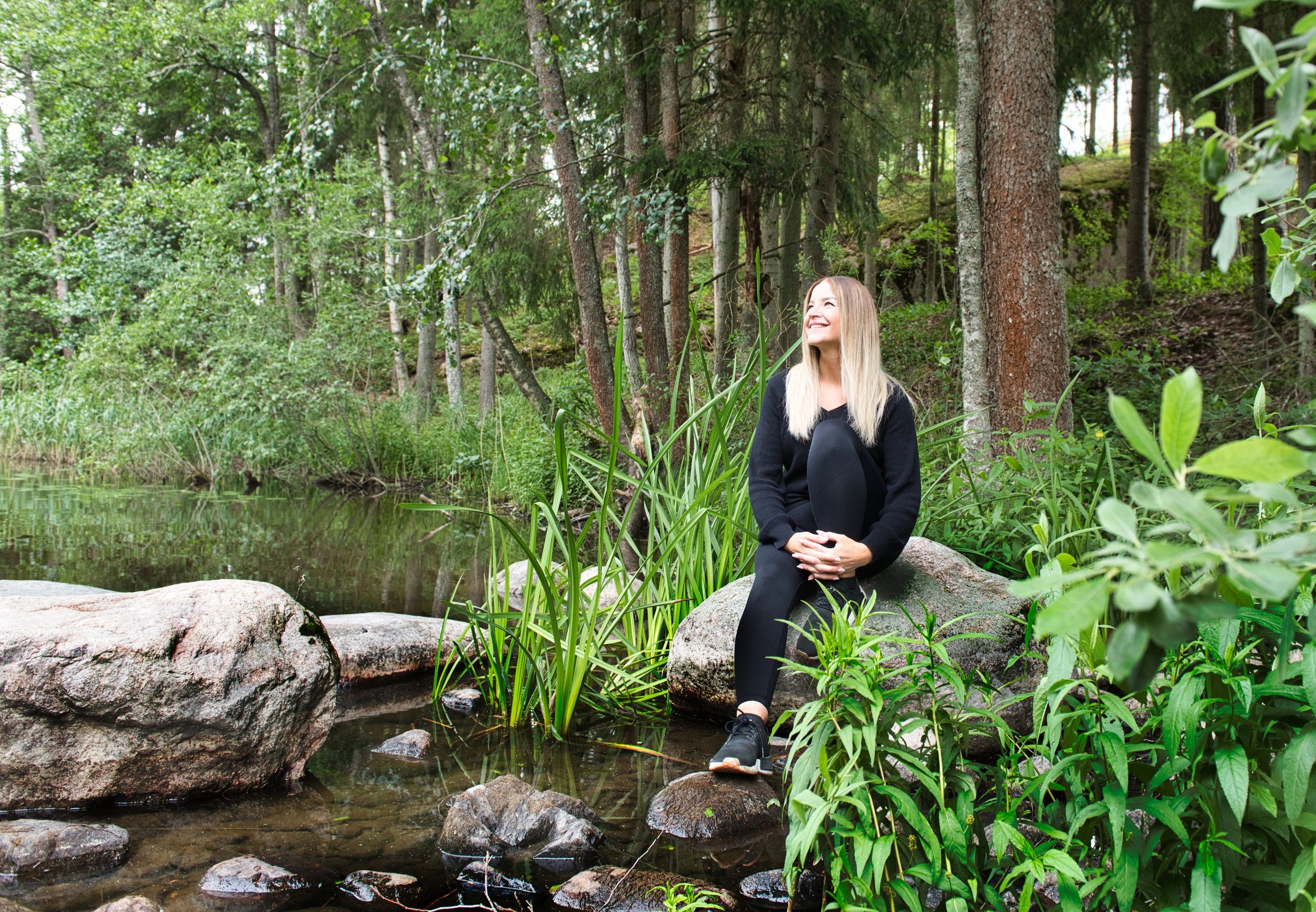When Anne went to the restaurant, she sat in the darkest corner - hope no one is looking, she thought
Anne Vainio has found a meaningful life. The wig is an important tool for people with alopecia. (Suomen Fantasiakuvaus, Marita Vento)Anne Vainio was diagnosed with Alopecia, a condition that causes hair loss about twenty years ago. The illness drove her to shame and exhaustion. A new life was found through therapy, life coaching and a realistic looking wig.
Anne Vainio, 45, has alopecia. It is an autoimmune disease that causes hair loss and baldness at varying rates. Vainio first became aware of the disease when she was just ten years old.
- A small patch the size of a coin appeared on my head. My mother and I went to the doctor and were told there was nothing we could do about it.
- But the hair grew back to where the bald spot was, and it was forgotten.
- Sixteen years went by before it got rapidly worse.
“I was quite alone with my illness”
Vainio was living in England at the time. One day, she noticed that the hair on the back of her head had fallen out.
- When I put my hair in a ponytail, I noticed a smooth spot at the back of my head. At the same time my mind was filled with distress. I wondered why on earth my hair had come out.
When more hair fell out, Vainio decided to see a doctor. But the encounter was difficult.
- The doctor downplayed my illness. He also wondered why I hadn't shaved all my hair off.
- He told me there was no cure for alopecia. The only take away from the appointment was that my condition was given a name.
After the appointment, Vainio started looking for information about the illness after the visit. However, at that time there was no social media to easily find support.
- I was quite alone with my illness. I was also desperate to hold on to the last few locks of hair. I kept hoping that my hair would somehow miraculously grow back.
Shame also took over, and Vainio tried to hide his situation from the eyes of others.
- I covered up the bald patches with make-up, scarves and hair extensions, for example. I felt great stress about my situation and did not want it to be visible to others.
- I also tried various self-treatments. I tried Chinese therapies and dietary changes, but nothing helped.
“People stared at my wig”
As the years went by, Vainio's emotional burden increased even more. His partner at the time also advised her to hide the illness.
- This idea came from our childhood. The idea was to keep the difficulties hidden and not to talk about them to others. It is clear, of course, that this way of thinking is a real burden.
The situation got worse and worse, and eventually Vainio was left with only a few hairs on her head. She decided to buy her first wig.
- It was not suitable. The wig actually made me feel worse. As I have a rather small head, the big wig of the time did not fit me at all.
- I felt like a cancer patient, even though I didn't have cancer. But I had a different kind of disease that I wanted to hide. But that was impossible, I ended up feeling even sicker.
I felt even worse, and the new wigs did not help.
- Hair is very important to a woman, and I felt very ashamed of my baldness. The pain was made worse by the realisation that I was not in control of my body.
Vainio felt that people stared at her wig, even if that wasn't always the case.
- For example, when eating out, I would seek the darkest possible corner. I also watched carefully to see if others were looking at my wig. And when someone talked about going to the hairdresser, I tried to change the subject quickly.
The situation drove Vainio into increasingly dark thoughts. She developed strong symptoms of exhaustion and anxiety. The death of his father also had an impact on the situation.
Ten years after her illness, Vainio sought therapy in England.
- The therapy was a huge help. It allowed me to start working with my inner self and my thought patterns. At the same time, I started to learn to accept myself as I am.
- For example, I had thought that others thought that because of my illness I was not able to cope with my work. This thought forced me to do even more at work, which in turn increased my workload and led to burn out.
Anne Vainio emphasize the importance of a realistic looking wig which was a game-changer. (Suomen Fantasiakuvaus, Marita Vento)Back to Finland
With a new lease on life, Vainio moved back to Finland in 2015. She started working through her illness with the help of a life coach.
- At the same time, I started to build my holistic well-being. I also got involved in the Alopecia Association, which gave me further insights into how to deal with the disease.
For a while, life and acceptance of the disease moved in a more positive direction. Then came a setback.
- In 2020, I focused even more closely on my situation with a life coach, and through introspection and thought processing, things started to get better again. Gradually, I was able to lighten my load.
A very important moment was finding a wig I liked after several years and dozens of wig options.
- The wig was found in England. When I got it, I recognised myself in the mirror again. My illness became invisible, which felt amazing.
- After that, I was gradually able to open up more about my illness. I was also able to choose who I wanted to share my story with, and I no longer felt sick in the eyes of everyone.
Anne Vainio wants to help other alopecians find the courage to live with the illness. (Suomen Fantasiakuvaus, Marita Vento)Into a new life
The 2022 Oscars provided an important emotional boost. When Chris Rock, the host of the ceremony, made a joke about the hair style of actress Jada Pinkett Smith, who has alopecia, it and the violent reaction of Pinkett Smith's husband to the joke caused a big stir.
- I wondered why on earth I wasn't able to talk openly about my condition when others could. Despite its unpleasantness, that event had a positive effect on me.
Vainio eventually graduated last year as a Life Coach herself. She wants to use her own contribution to help other Alopecians find the courage to live with their illness without hiding it.
- The most important thing is that no one should be left alone with the illness. I know what it feels like and that it leaves its mark. That's why I want to help others.
Anne Vainio does not want the attention that wearing a bald head would attract. With a good wig, the illness became invisible. (Suomen Fantasiakuvaus, Marita Vento)Acceptance
Earlier this year, Vainio organised a wig shopping trip to England for five members of the Alopecia Association.
- We went to England because, unfortunately, there is still not a very comprehensive supply available in Finland.
She hopes that society will take into account the need for wigs for people with the illness.
- It would be desirable for wigs to be considered as a very important aid to the illness. They should be individually defined and free of charge. However, this is rarely the case. As a result, we have to fight for our rights, with the process of obtaining a suitable wig taking months.
- Personally, I am not able to go out the door without a wig as my hair is a big part of my identity. I don't want the attention that living bald brings, because the illness is just one part of me.
Anne feels that the illness has also brought good things.
- I've grown and got stronger mentally, a lot. At the same time, I am grateful to be able to help others with my contribution.
- I encourage everyone to accept themselves as they are. Although it is a challenging journey, it is rewarding. Nobody should be alone on this journey. Help and support is available.




